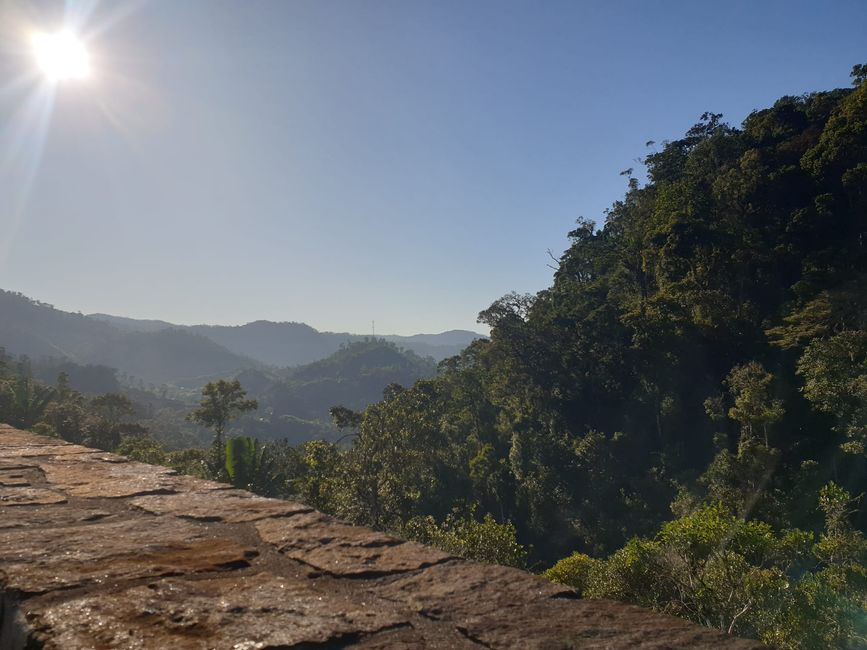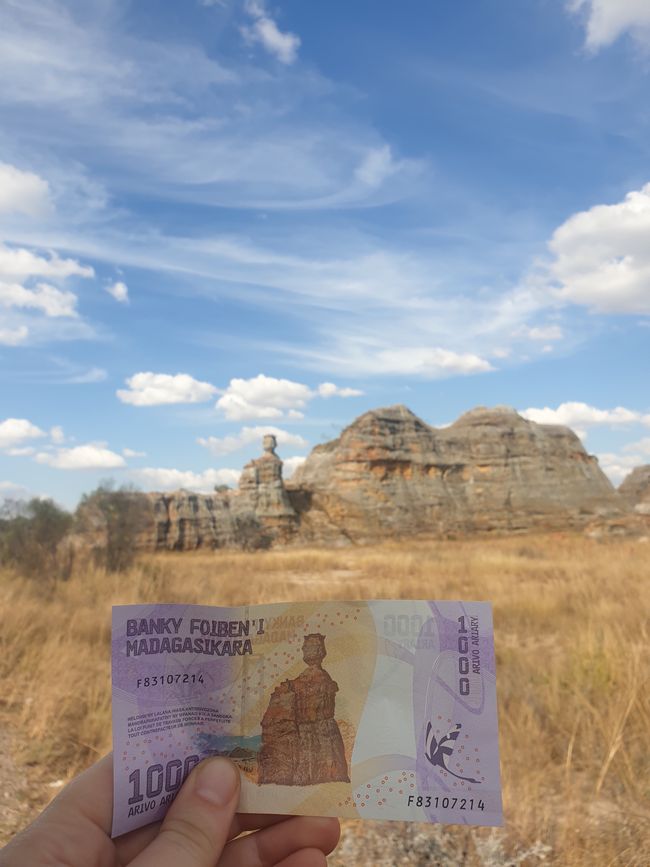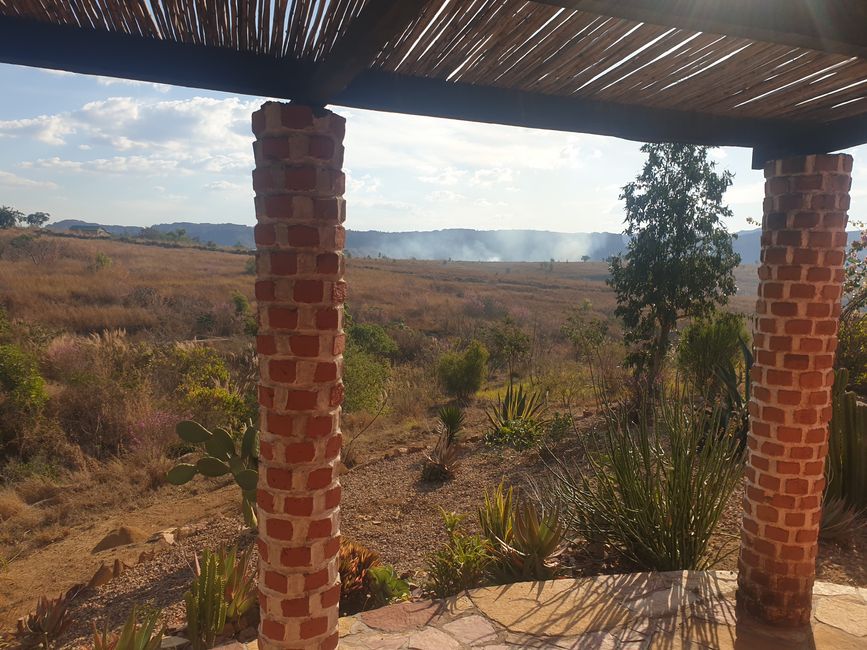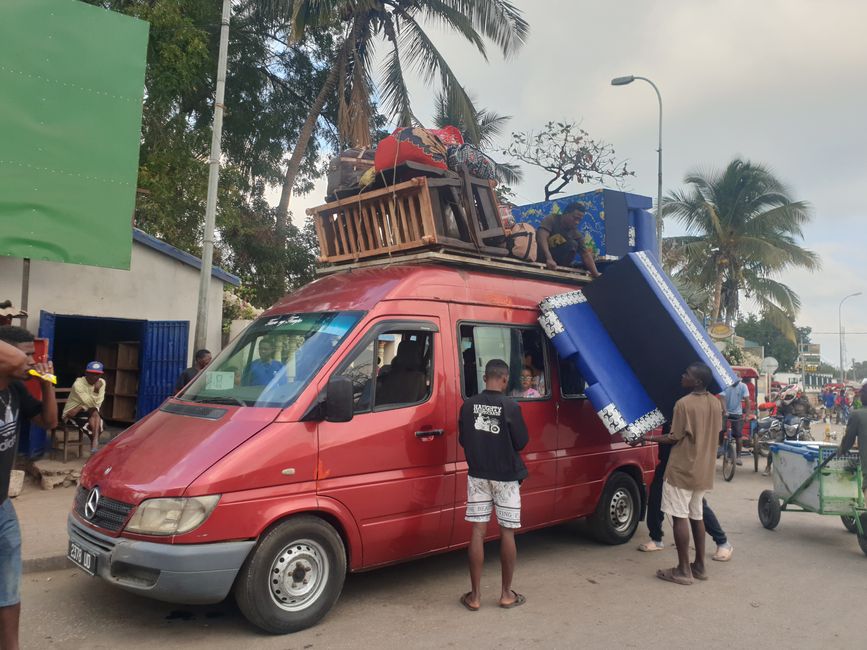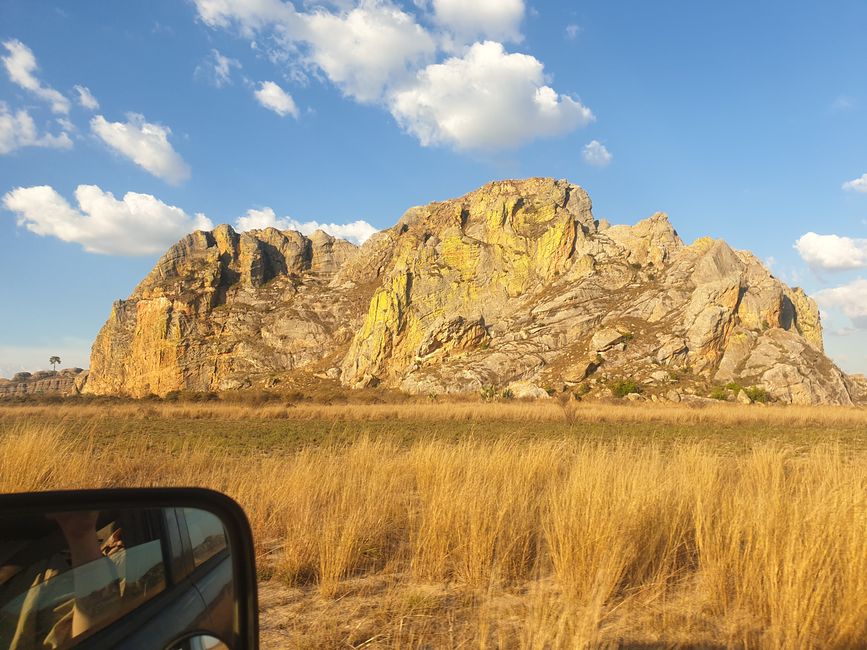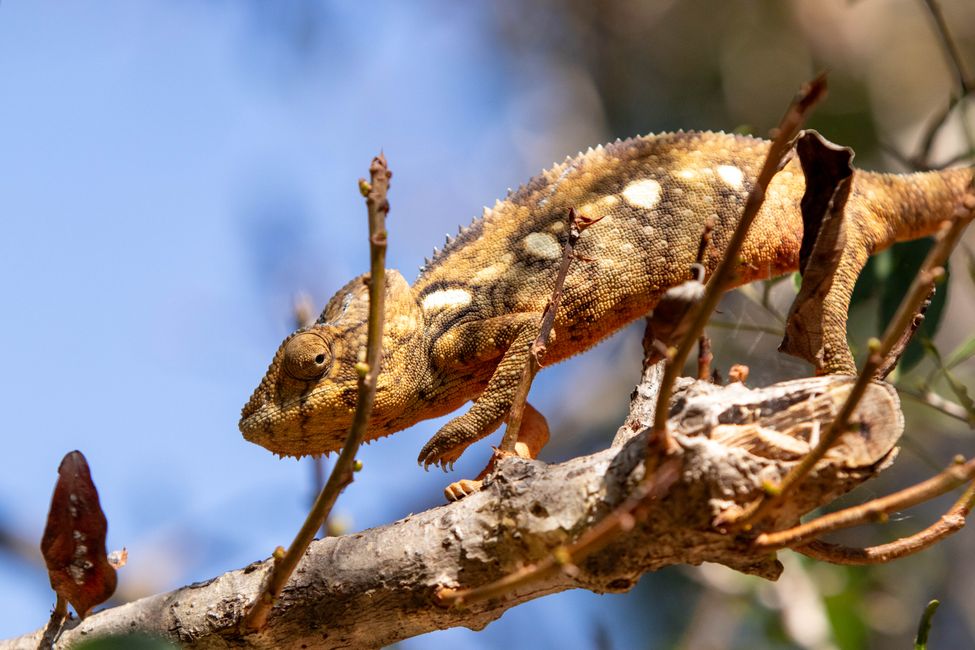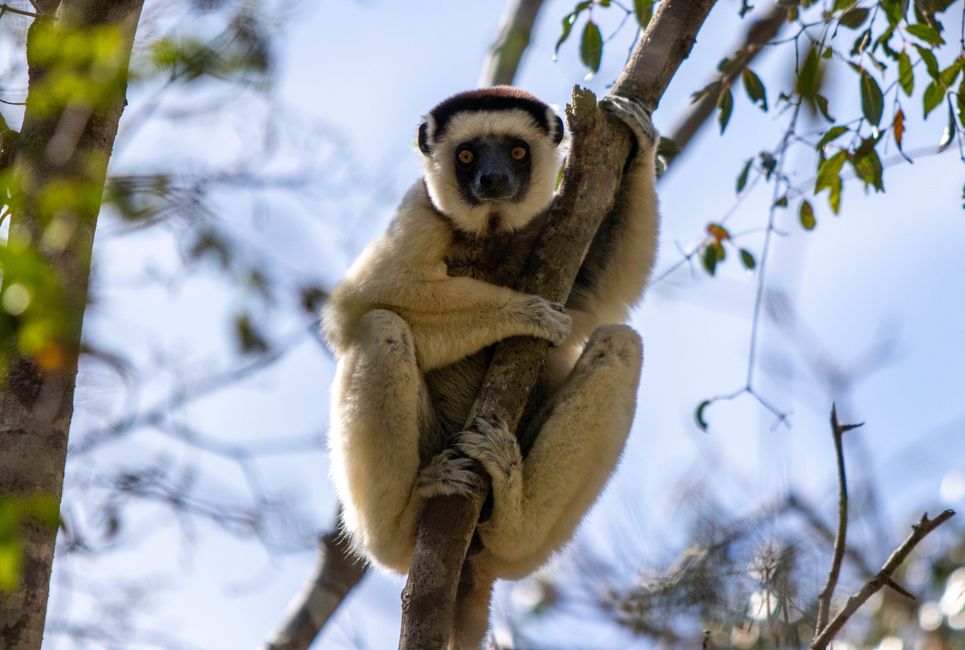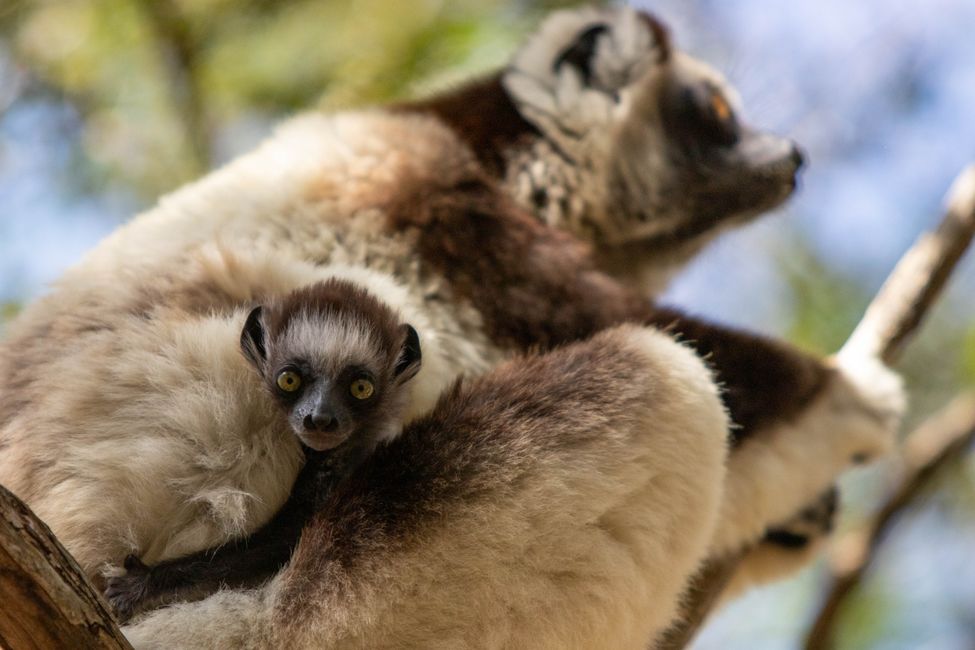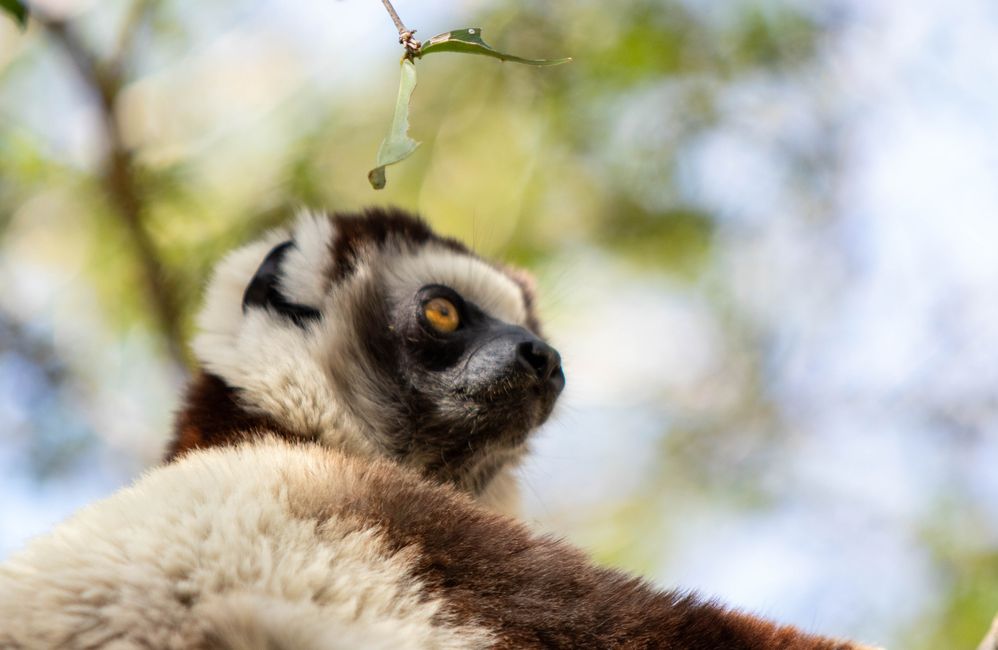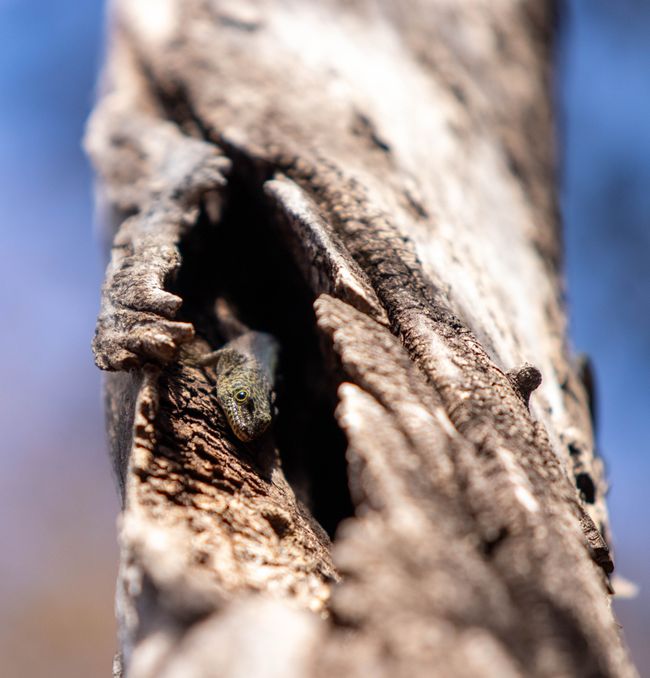By the powers of Isalo
வெளியிடப்பட்டது: 04.09.2023
This morning we have our last generous breakfast on the beach. Then we head inland. First along the coast to Toliara. There we get some money, buy a few snacks and drink one last coconut juice. Then we set off towards Isalo National Park. The oldest and largest national park in the country. We pass some villages and barren high plateaus. It's pretty warm. We're all less hungry, so there are a few snacks at the gas station. It's always a matter of who wants to test the Malagasy cookies the most. I prefer ones that look very unindustrial, almost as if the label was made and stuck on myself. And successful. The cookies are pretty tasty, without sugar and with dried fruits. Refreshed, we stop at Zombitse National Park, a small park in the middle of this barren landscape. We take a one-hour tour and say hello to chameleons, birds and sifakas. A little highlight is the baby lemur that clings to its mother's stomach and bravely peeks out from time to time. Then we continue along the road towards Isalo. Manantsoa tells us about the city of sapphire. A city that actually only exists because of the sapphire deposits nearby. A city that somehow seems as if we were somewhere else. Manantsoa laughingly calls it “little Dubai”. Yes, that's pretty good. We stop in front of a jewelry shop that makes jewelry from the local stones. Or sold. Well, it actually looks like we are in Dubai. It's unreal, there are expensive cars and big villas everywhere. A security guard stands in front of the shop and smiles at me: “Bonjour, madame!” Hmm, bonjour. If I were a Malagasy woman, he certainly wouldn't smile at me like that. We go into the house. There is marble everywhere and a man is coming towards us. “Bonjour! This way please.” As if he had been expecting us. There is a fountain in the yard and turtles run through the short grass. Turtles?! He only speaks French and probably comes from South Africa. He shows us the expensive jewelry and tells us that we can also take a tour to watch people dig for diamonds in what are certainly very questionable conditions. No thanks. We look at things and then go back out. Just get out of here. It all seems extremely creepy. “The business belongs to a Swiss man,” says Manantsoa. But he's not here. No, just collect the money every now and then. We get into the car and quickly turn our backs on this city. I didn't want to walk around on the street there. We continue driving and huge mountain formations appear. Isalo. We drive through the mighty sandstones on the right and left of the road, which act like a gate. After a few meters, Manantsoa points to the “Queen Isalos” and stops. He gives me a 1000 Ariary note. And actually, that is exactly the motif as on the banknote. We continue driving for a few minutes and enjoy the view before we arrive in Ranohira. Ranohira means “water and lemur”. Our accommodation is at the exit of the town directly in front of the beautiful panorama of Isalo. For the sunset we drive a little further out of town and into the sandstone landscapes. Beautiful. Dinner is available in the on-site restaurant. One of the best meals of my stay in Madagascar. Rice and beans, what else? With vegetables and eggplant balls. But very tasty, almost oriental. A small Malagasy jam session with drums, guitar and singing by Manantsoa and his brother then ends the day.
பதில்

